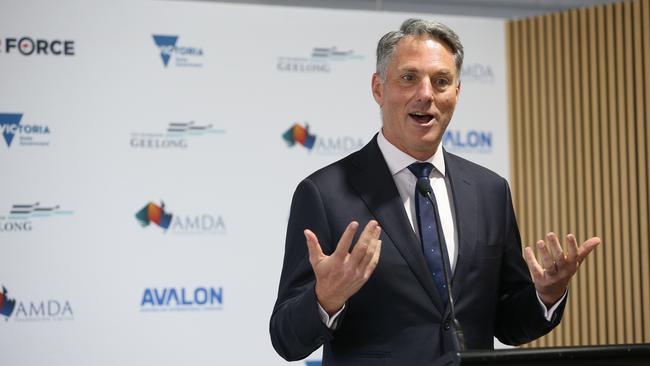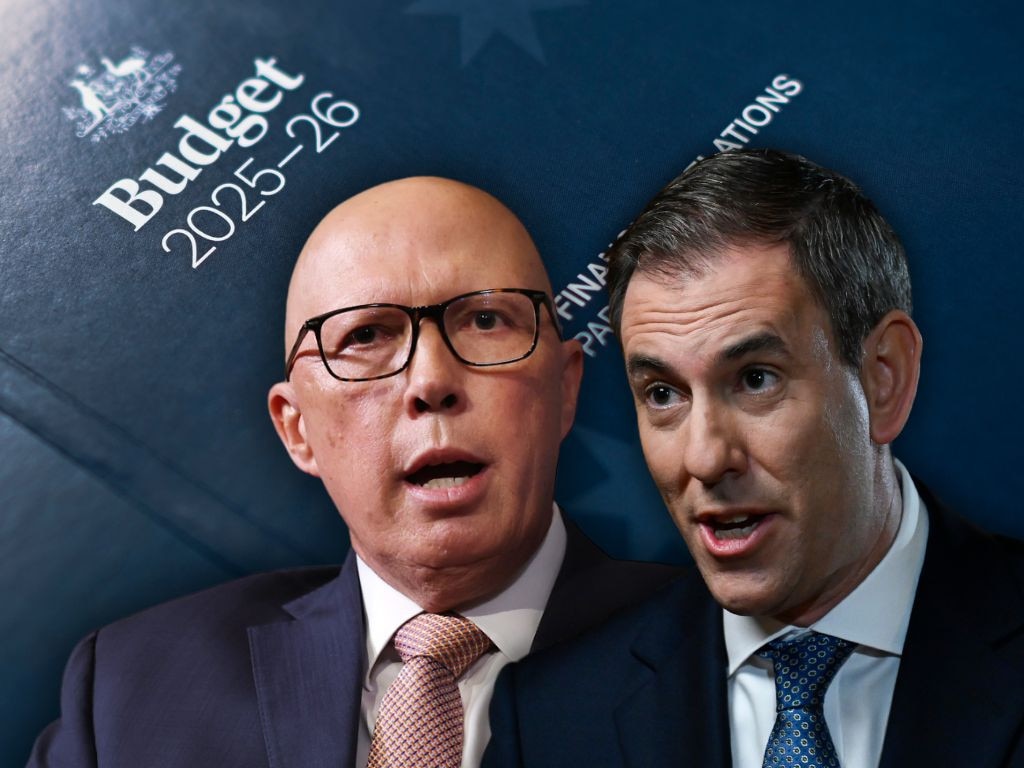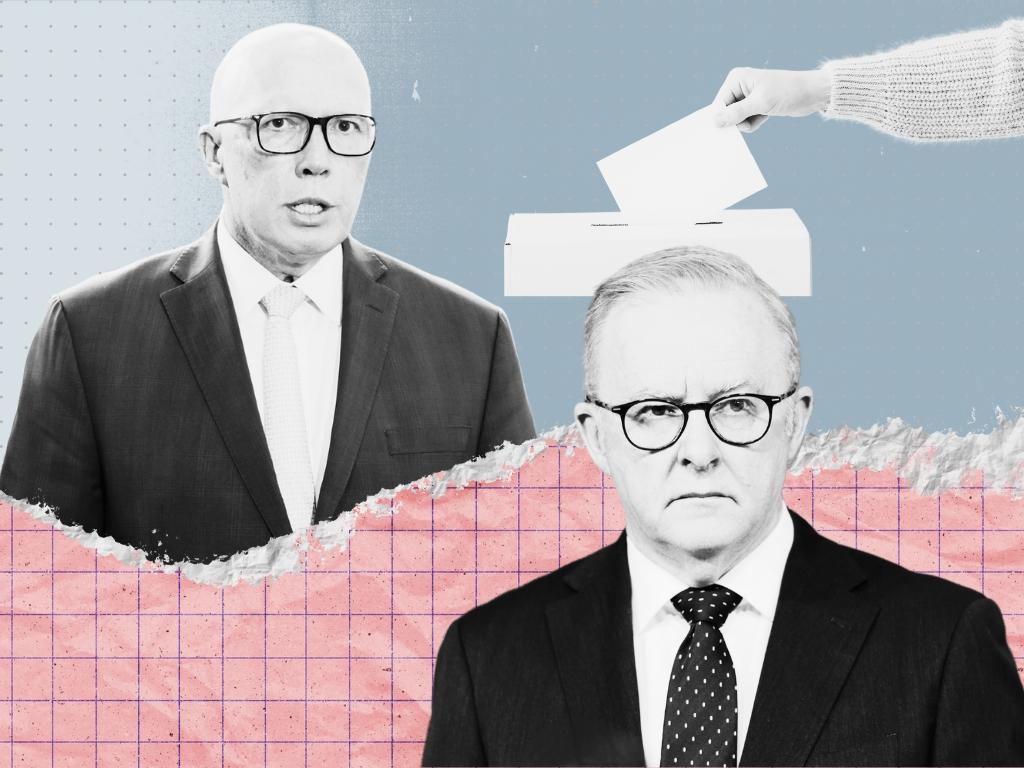Marles confirms just $1bn in Defence spending to be accelerated in federal budget
The Albanese government will accelerate just $1bn worth of Defence spending in the federal budget over and above its already planned funding trajectory.

Labor will defy the Trump administration’s calls for a substantial boost to Australia’s military spending, sticking to its current funding trajectory in Tuesday’s federal budget while bringing forward $1bn for submarine and missile programs.
The decision to leave the defence budget largely unchanged comes despite an estimated $4bn-a-year in lost purchasing power for Defence following years of high inflation, and the Coalition’s pledge to spend “much more” than Labor on new military capabilities.
With a federal election set to be called within days, Richard Marles confirmed on Monday that the budget papers would show a $10.6bn increase in defence funding over the coming four years.
The figure was already baked into the government’s long-term spending plan, and sees $5.3bn shift into the four-year forward estimates period from the government’s decade-long $50bn boost to defence spending.
The Defence Minister said $1bn worth of funding would be “accelerated” to prepare for US and British submarine rotations out of Perth’s HMAS Stirling naval base, and speed up the establishment of a domestic guided weapons industry.
He said the budget represented “the most significant increase in Defence spending in peacetime Australia since the end of the Second World War”.
Yet the funding does not markedly alter the government’s current spending plans, which would see the Defence budget rise to about 2.33 per cent of GDP by 2033-24.
One of the Trump administration’s picks for a key Pentagon policy role, Elbridge Colby, recently called for Australia to spend at least 3 per cent of GDP on defence, while warning that the US faced a “difficult problem” in meeting its AUKUS pledge to supply Australia with three Virginia-class submarines.
Former Labor defence minister Kim Beazley has called on the Albanese government to meet the Trump administration’s demands, and Australian Industry Group chief executive Innes Willox says “the days of languid defence procurement must end immediately”.
Opposition defence spokesman Andrew Hastie, who has pledged a Coalition government would spend an extra $3bn on a fourth squadron of F-35 joint strike fighters worth an estimated $7.5bn, accused the government of playing “tricky politics” with the Defence budget.
“The Defence Minister simply confirmed the budget will have no new additional money for Defence,” he said.
“It is clear Richard Marles has once again lost out at the expenditure review committee table.”
Mr Marles said the government’s funding commitments stood “in stark contrast to what we saw when the Liberals were governing”, when the Defence budget contained insufficient funds to meet the government’s capability plans.
“What we know from the Defence Strategic Review is that in their final years in government, they were secretly cutting $20bn out of the Defence budget – that’s in black and white,” he said.
Mr Marles’ comments came as he announced the arrival of the army’s first two High Mobility Artillery Rocket Systems launchers, describing them as a “game changer” for the Australian Defence Force.
The army will eventually get 42 of the launchers, giving it the ability to strike targets more than 500km away.
Defence economist Marcus Hellyer said the government’s claim to be presiding over record spending was meaningless, as the defence budget rose in nominal terms each year. “That’s just the nature of the beast of a world with inflation,” Dr Hellyer said.
While inflation has returned to about 2.4 per cent a year, he said soaring prices during the Covid years continued to take a toll on the defence budget.
“There’s nothing to compensate Defence for the high rates of inflation over the past three years that have meant Defence has lost around 8 per cent of its buying power,” he said. “Defence would need an additional $4bn a year ongoing to make up that lost ground.”
Former Defence official Michael Shoebridge said the lack of new money would see the erosion of the nation’s defence capabilities continue. “The big thing here is the current plans are unaffordable at the budget trajectory that the government has,” he said.
“That’s because their workforce costs are going up, old systems that are towards the end of their life are costing more to maintain, and their new systems are getting so expensive that they’re bankrupting the investment budget. So they’ve got the triple whammy.
“And the big problem, aside from that, is our military power is reducing over the coming 10 years, not increasing.”
DSR co-author Peter Dean, who was among a chorus of commentators calling for a real Defence funding boost, said Labor was avoiding a bidding war with the Coalition and would seek to cast itself as a more responsible manager of the budget. “They will contrast themselves with the Morrison government, and particularly when (Peter) Dutton was defence minister, when there were lots and lots of promises made with zero funding attached to them,” he said.
Meanwhile, the foreign aid sector says Australia’s development assistance budget has fallen to just 0.68 per cent of the federal budget, down from 1.2 per cent under the Howard government.
The current defence to aid budget ratio stands at about 10:1, but would rise to about 19:1 if defence spending were to rise to 3 per cent of GDP.
Safer World for All campaign spokesman Tim Costello said Australia’s static aid budget was making the nation less safe.
“It was Trump’s own former defence secretary General James ‘Mad Dog’ Mattis who warned: ‘If you’re going to cut money on diplomacy and aid, you better buy me more bullets’,” Mr Costello said.
“That’s because real security requires more than just military power — it requires stability, trust, and reliable partnership. That’s why we must invest in aid, not let it slip further behind.”






To join the conversation, please log in. Don't have an account? Register
Join the conversation, you are commenting as Logout